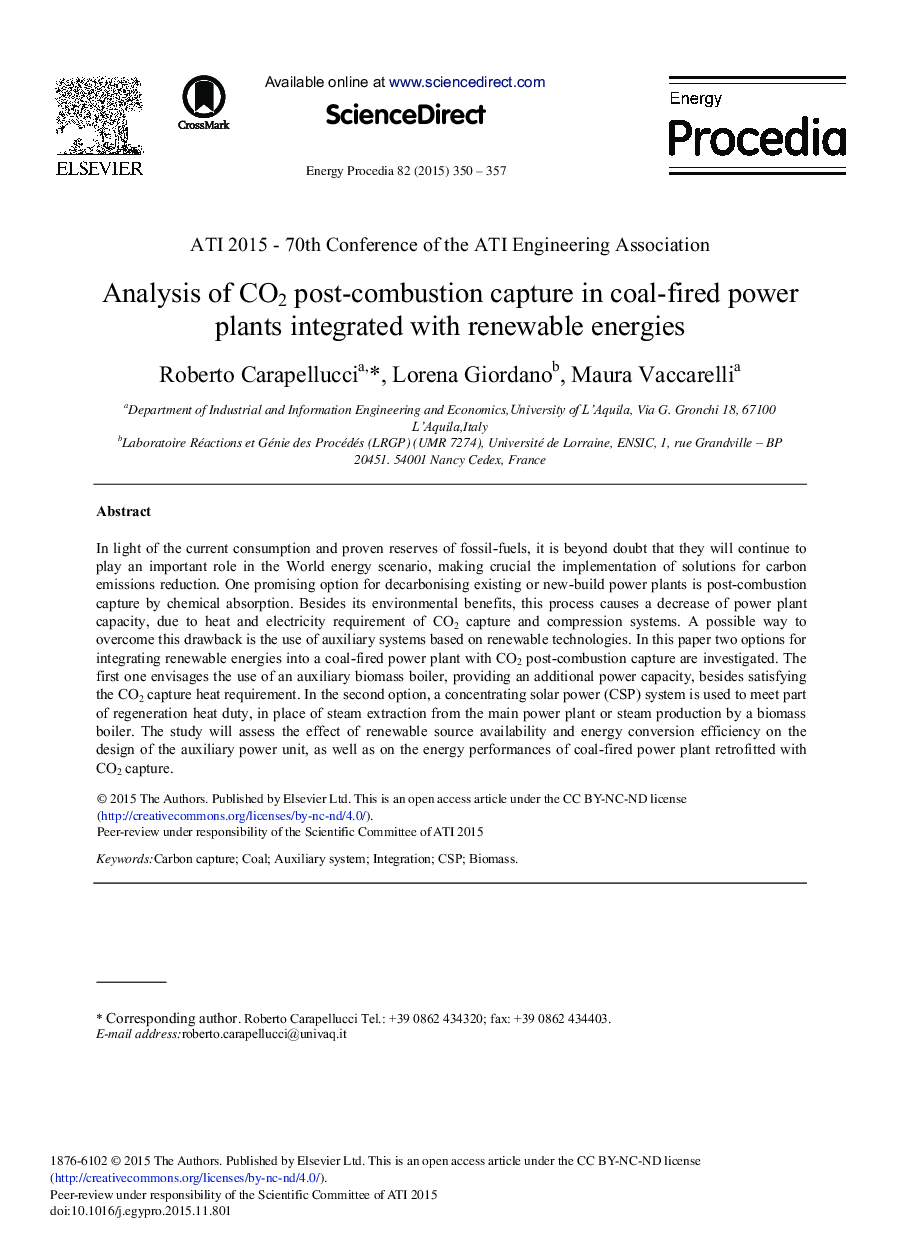| Article ID | Journal | Published Year | Pages | File Type |
|---|---|---|---|---|
| 1509079 | Energy Procedia | 2015 | 8 Pages |
In light of the current consumption and proven reserves of fossil-fuels, it is beyond doubt that they will continue to play an important role in the World energy scenario, making crucial the implementation of solutions for carbon emissions reduction. One promising option for decarbonising existing or new-build power plants is post-combustion capture by chemical absorption. Besides its environmental benefits, this process causes a decrease of power plant capacity, due to heat and electricity requirement of CO2 capture and compression systems. A possible way to overcome this drawback is the use of auxiliary systems based on renewable technologies. In this paper two options for integrating renewable energies into a coal-fired power plant with CO2 post-combustion capture are investigated. The first one envisages the use of an auxiliary biomass boiler, providing an additional power capacity, besides satisfying the CO2 capture heat requirement. In the second option, a concentrating solar power (CSP) system is used to meet part of regeneration heat duty, in place of steam extraction from the main power plant or steam production by a biomass boiler. The study will assess the effect of renewable source availability and energy conversion efficiency on the design of the auxiliary power unit, as well as on the energy performances of coal-fired power plant retrofitted with CO2 capture.
